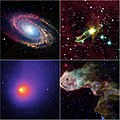File:Ssc2003-06k 250.jpg
Vai alla navigazione
Vai alla ricerca

Dimensioni di questa anteprima: 599 × 600 pixel. Altre risoluzioni: 240 × 240 pixel | 627 × 628 pixel.
File originale (627 × 628 pixel, dimensione del file: 97 KB, tipo MIME: image/jpeg)
Cronologia del file
Fare clic su un gruppo data/ora per vedere il file come si presentava nel momento indicato.
| Data/Ora | Miniatura | Dimensioni | Utente | Commento | |
|---|---|---|---|---|---|
| attuale | 00:06, 18 gen 2007 |  | 627 × 628 (97 KB) | Siebrand | {{Information |Description=<table border="1"> <tr><td>Image ID: ssc2003-06k</td><td>Release date: en:December 19, en:2003</td></tr> <tr><td colspan="2">Source: [http://www.spitzer.caltech.edu/Media/releases/ssc2003-06/ssc2003-06k.shtml Spitzer n |
Pagine che usano questo file
Nessuna pagina utilizza questo file.
Utilizzo globale del file
Anche i seguenti wiki usano questo file:
- Usato nelle seguenti pagine di af.wikipedia.org:
- Usato nelle seguenti pagine di cs.wikipedia.org:
- Usato nelle seguenti pagine di fa.wikipedia.org:
- Usato nelle seguenti pagine di fr.wikipedia.org:
- Usato nelle seguenti pagine di id.wikipedia.org:
- Usato nelle seguenti pagine di ko.wikipedia.org:
- Usato nelle seguenti pagine di lb.wikipedia.org:
- Usato nelle seguenti pagine di nl.wikipedia.org:
- Usato nelle seguenti pagine di ru.wikipedia.org:
- Usato nelle seguenti pagine di sk.wikipedia.org:


